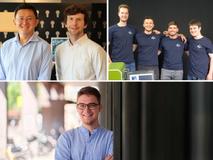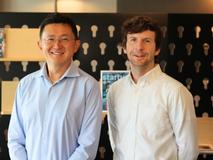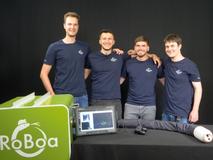CHF 40,000 for next-gen fusion power, AI-driven robots for industrial inspections, and a sealant to detect digestive fluid leaks
18.12.2024
Firefly Fusion, RoBoa, and Veltist were selected at Venture Kick's second financial and entrepreneurial support stage. Their projects demonstrate power plant-level performance and hundreds of megawatts of fusion power; develop cutting-edge, snake-like robots, using growing-based locomotion to go where humans and other robots cannot; and provide an innovative surgical sealant designed to prevent and detect digestive fluid leaks.
 |
 FireFly Fusion: Dr. Rustem Ospanov
|
 RoBoa, from left to right: Alexander Kübler, Betim Djambazi, Nicolas Aymon, and Pascal Auf der Maur
|
 Veltist CEO Alexandre Anthis
|
Firefly Fusion: Making fusion happen
Fusion, the energy source of the sun and stars, holds the unique potential to be a safe, clean, and reliable part of humanity’s solution to climate change. To bring fusion to the electrical grid, Firefly Fusion begins from the pinnacle of mainstream academic research – the tokamak. After decades of exponential improvement, tokamaks are just one step away from demonstrating power plant-level performance and hundreds of megawatts of fusion power.
To achieve this, Firefly Fusion will take an existing mature design, implement several novel technical innovations, and build it quickly in Europe. Based on this breakthrough tokamak, Firefly Fusion will design fusion reactors and control systems to license electric utilities. Firefly Fusion is led by Dr. Rustem Ospanov. Rustem is an experimental physicist with 18 years of impactful research involvement in large cutting-edge projects at CERN and Fermilab. He holds an entrepreneurship MBA from EDHEC, which focuses on the nascent fusion industry.
The Venture Kick funds will be used for computational analysis to further develop the design of Firefly’s breakthrough tokamak.
RoBoa: Revolutionizing confined spaces navigation, inspection, and rescue
Industrial inspections often require people to enter hazardous environments, while existing solutions struggle in winding, sharp, or slippery conditions.
RoBoa overcomes these limitations with its cutting-edge, snake-like robot, which uses growing-based locomotion to go where humans and other robots cannot. With exceptional manoeuvrability, RoBoa autonomously navigates and senses its environment, gathering vital maintenance data to reduce costly downtime and improve safety. Founded by ETH Zurich engineers, composed of Alexander Kübler, Betim Djambazi, Nicolas Aymon, and Pascal Auf der Maur, RoBoa is set to revolutionize the inspection of process pipes, sewers, and tanks — making operations safer and more efficient. Beyond industry, RoBoa’s versatility also extends to search and rescue, where it can locate and assist victims trapped under debris, for example after earthquakes.
RoBoa will use the funding to support its prototyping and pilot testing as well as for marketing to engage with new customers.
Veltist: Eradicating post-operative leaks
Veltist tackles the critical issue of post-operative digestive fluid leaks in abdominal surgeries, a complication affecting over 10% of the 14 million procedures performed annually worldwide. These leaks can lead to severe complications and increased mortality, with existing solutions often failing due to poor adhesion and chemical instability in digestive environments.
Led by Dr. Alexandre Anthis, Veltist is developing AnastoSEAL, an innovative surgical sealant designed to prevent and detect digestive fluid leaks. AnastoSEAL combines high-performance adhesion with early leak detection, a breakthrough developed in collaboration with top surgeons over nearly a decade. With an estimated USD 7 billion market potential, Veltist is set to disrupt the surgical field by addressing a critical unmet need.
Veltist will use the Venture Kick Stage 1 funds to drive AnastoSEAL through regulatory processes and business development, paving the way for first-in-human trials and positioning the technology for successful market entry and widespread adoption in surgical practices.


